How to Thicken Acrylic Paint – Making Acrylic Paint Thicker
Whether you are a beginner or a seasoned artist, you may have noticed that the characteristics of paints can vary from brand to brand. A heavy body acrylic paint in one brand may be thicker than one in another brand, so knowing how to alter paint viscosity is a very useful skill for an artist to have. Below, we have put together a guide to the different ways to thicken acrylic paints, as well as the pros and cons of each method.
Contents
The Basics of Acrylic Paint
It is important to understand acrylic paint to know how different thickening agents will impact it. Acrylic paint is made from an acrylic polymer that is then mixed with pigments to produce the multitude of colors you see on the shelves. Acrylic paints are one of the most popular painting mediums worldwide, and for good reason. These paints offer benefits such as a faster drying time, easier cleanup, and the flexibility to be used on many different surfaces compared to oil paints.
Water-Soluble
Their composition means that acrylic paints are both non-toxic and water-soluble. This makes these paints great for younger kids and beginners. Your colors have the added benefit of being water-resistant when they have dried making your finished pieces more resilient.
Quick Drying
Acrylic paints dry faster than oil paints. This means that you do not have to wait as long between layers when painting, allowing you to create complex pieces much faster than when using oil paints. As they are water soluble, water or an extender can easily be added to acrylic paint if you prefer a longer drying time.
Options for All Budgets
Acrylic paints are affordable compared to other mediums and are widely available. Broadly, there are three main grades of paint available; namely professional-grade, student-grade, and craft-grade paints. Each grade has different price points and paint quality.
Professional paints are also known as artists-grade paint and are the most expensive acrylic paints.
These paints are high quality and offer the best blending, pigments, and longevity available. Student-grade paints are often made by the same manufacturers as professional paints so share the same paint shades and names. They are less expensive than artist-grade paints and so are great for experimenting and learning, however, they are also less pigmented.
Craft acrylic paints are the most inexpensive paints and are widely available. This price cut means that colors can be duller or more difficult to mix and blend than student or professional grades. They are often not made by the same manufacturers as other paints; therefore, the colors and color names are different making it harder to swap between them or find the color you are looking for.
All these qualities make acrylic paint very adaptable, easy to use, and long-lasting meaning they are ideal for beginners and professionals alike.
Different Acrylic Paint Thicknesses
The thickness of your paint can add a different dimension to your painting. Thick paints can be used to build texture and movement through brushstrokes while thinner paints create soft shapes and lines. Acrylic paints come in many different thicknesses. These different viscosities make acrylic paint highly versatile for different paint styles and surfaces beyond the canvas, including glass and wood. The three main consistencies that acrylic paint is sold in are heavy body, soft body, and high-flow paints.
Heavy-Body Acrylic paint
Heavy-body acrylic paints have a thicker consistency akin to oil paints. Their thickness makes them great for beginners as they are easy to work with and blend. Heavy-body paints are ideal for creating textured pieces such as in the Impasto painting art style and provide full coverage.
Soft-Body Acrylic Paint
Soft-body acrylic paints have a thickness similar to a thick cream and can be used to produce a beautiful opaque watercolor effect. They are thinner than heavy-body paints, so they dry faster and require some practice initially. Artists who prefer not to have visible brush strokes in their paintings generally use this paint thickness.
High-Flow Acrylic Paint
High-flow acrylic paint has the thinnest consistency and can be tricky to work with. This ink-like paint works well when airbrushed or splattered and dripped onto a canvas. All these paints can be altered further with the various gels and pastes and acrylic mediums we will be exploring.
Why Thicken Acrylic Paint?
While there are broadly these types of acrylic paint they can vary from brand to brand. Sometimes you may find yourself with a heavy-body acrylic paint that is much thinner than the heavy-body paint that you are used to. Many other things can impact the thickness of your paint from the environment, as well as the paint’s age and quality.
Acrylic paints that are too thin can dry too quickly and are difficult to work with and blend.
You may want to use thicker paint to instantly add a dimensional element to painting but do not want to buy a new tube of heavy acrylic paint. The paint may also not be available in the color you want to use. As you can see there are many reasons you may want to thicken your acrylic paint to suit your needs and make them easier to use. There are a variety of acrylic mediums and DIY paint hacks that can be used to thicken your acrylic paints. Each method has its own strengths and weaknesses and can affect your finished piece in different ways.
How to Thicken Acrylic Paint Using DIY Thickeners
There are many different “paint hacks” that claim to make acrylic paint thicker with common household items, however, they often have unforeseen impacts on the paint and your final piece. Many of the thickeners used in these methods are cheap and readily available, however, they may also impact the final color or finish of the paint either immediately or once it has dried.
Talcum Powder and PVA Glue
Using talcum or baby powder and PVA glue is a cost-effective way to thicken acrylic paint. You can do this by mixing the talcum powder and PVA glue in equal parts to create a paste. If you desire a thicker consistency, you can add more powder to the mixture. Add the paste to your paint in small amounts and mix thoroughly until the paint has reached your preferred thickness. Ensure that you use acrylic-based PVA glue to thicken the paint, which can be harder to find. Your paint will have a more matte finish because of the talcum powder.
PROS
- Inexpensive
- Widely available
CONS
- Requires multiple ingredients
- May affect the finish and longevity of your paint
Baking Soda
Using baking soda is another DIY method for making acrylic paint thicker, but also gives it a textured finish. This method is straightforward and only requires one ingredient, which you usually have in your pantry at home. To thicken your paint, combine four parts of paint with one part of baking soda. The baking soda will create a thick textured paint with a matte finish, however, using too much baking soda can give your paint a chalky and clumpy texture.
PROS
- Inexpensive
- Widely available
- Easy to use
- Gives a textured finish
CONS
- Can affect the integrity of your paint if overused
- May affect the longevity of your paint
Cornstarch or Flour
Like baking soda, cornstarch or flour are other cooking ingredients that can be used to thicken acrylic paint. In a cup, add two tablespoons of water to two tablespoons of cornstarch and mix into a paste. Then add one cup of water and the mixture to a saucepan and bring it to a boil. Keep boiling the mixture while stirring until it turns into a paste, and then take it off of the heat and allow it to cool.
Add your paint to a palette and use a palette knife to add a small amount of the paste to your paint and mix it thoroughly.
Keep adding small amounts until it reaches your desired thickness. Although cornstarch and flour are used to thicken sauces, when they are used to thicken acrylic paint, they can impact the longevity of the paint and make them much more brittle when dry. The paint can also become much more difficult to work with by making them dry much quicker and giving them a clumpy texture if you try to thin it out again with water or add a wash. If you are on a budget, DIY acrylic paint thickeners are tempting, however, they can have unforeseen impacts on your art. They can be a fun experiment or a trial for working with thicker paints, however, if you want to get more consistent results it is best to use a medium that is specifically designed for thickening acrylic.
PROS
- Inexpensive
- Readily available
CONS
- Requires some prep work
- Can alter the look and longevity of the final piece
How to Thicken Acrylic Paint Using Acrylic Paint Mediums
Many acrylic mediums can be mixed into acrylic paint to thicken it. Although they are pricier than DIY methods, they are much more consistent and do not change the integrity of your paint. This ensures you are not met with any surprise changes to your colors or finish of the final piece, and that your paint will not dry too quickly and will last a long time.
These thickeners are available for almost all art mediums so make sure the one you pick is developed to be used with acrylic paint.
Many of them also come in a variety of finishes. Clear and matte finishes should not impact your final piece, but opaque and gloss finishes can be used to achieve a different effect. Always mix the correct hue of your color before adding a thickening paint medium and be sure to swatch your paint to see how it dries.
Acrylic Gel Medium
Acrylic gel medium is the most popular method of thickening acrylic paints. Thickening gel for acrylic paint can be white or red when wet but dries clear, has a creamy texture, and comes in different thicknesses and finishes from matte to gloss. When a thick gel medium is added to acrylic paint, it can thicken the paint without altering its color. This is because the acrylic medium is made from a colorless acrylic polymer. You can also add any amount of the gel without causing your paint to bead but a lot of the gel can make it more transparent.
This can be handy if you are looking to make heavy body paints more transparent without altering their thickness or quality.
Types of Acrylic Gel Mediums
Soft gel is the thinnest gel medium and can be used to thicken fluid acrylics to a soft acrylic consistency which is great for more traditional painting but not for impasto painting. Regular gel medium has a heavy body acrylic paint consistency. They can be used to make fluid and soft body paints thicker and perfect for impasto painting. If you want to thicken heavy body acrylics then you should use heavy or extra heavy gels.
This can make paint thick enough to make peaks like meringue and is best to use with palette and painting knives or stiff-bristled brushes. Very high peaks can shrink slightly as they dry because the water in the gel and the paints evaporate.
How to Thicken Acrylic Paint With Acrylic Gel Mediums
To use a thickening gel for acrylic paint, choose one that has a thicker consistency than your acrylic paint and make sure it has your preferred finish. The thickness of the gel you use will impact the final thickness of your paint. Then, add the desired amount of medium to your paint and mix it until it reaches a uniform smooth consistency thoroughly.
Add small amounts of gel until you get the consistency you want. You can then apply your paint with your brush or palette knife
It is best to use gels from the same brand of your paints if they are available or swatch-test them and let them dry to check the final effect. Gel mediums also lengthen the drying time of acrylic paint, which can be great for those who want to work longer with their paints and blend colors.
PROS
- Readily available
- Come in a variety of finishes
- Reliable results that do not impact the longevity of the paint
- Only one product and Easy to use
CONS
- Can be expensive
- Large amounts can make the paint more translucent
Texture Gels
Although you can mix any paint with stucco or sawdust to create your own thick textured paint, using a textured gel is easier and more consistent. Texture gels are thick gels that contain textural elements such as sand or glass beads and can be added to paint to give a unique look. They also thicken your acrylic paint and do not compromise the longevity or color of your paint. There are many available, all bringing a different look and feel to your artwork. You can either mix a textured gel directly into your paint like with acrylic gel or use it to build up the texture on your canvas first before painting.
You may need to use a palette knife to mix and apply your textured gel and paint as brushes are often not robust enough.
Some textured gels are colored and can change the color of your paint so swatch your thickened paint before using it. When using a textured gel, consider the surface you are painting on, a smooth surface will give you the most consistent result and can be layered to your desired effect. Painting already textured surfaces will require less medium but may impact the look of the final piece.
PROS
- Readily available
- Come in a variety of finishes and textures
- Reliable results that do not impact the longevity of the paint
- Gives a textured finish
CONS
- Limited in how thick it makes paint and varies with the type
- Can take some practice to use
- Can be expensive
Modeling Paste
Modeling paste is a very thick paste made with an acrylic polymer and marble dust. The paste is most often used for sculpting, however, mixing it with paint while it is still wet thickens the paint. When using modeling paste to thicken acrylic paint, only add small amounts of paste at a time and mix it through. You can then use a palette knife to apply the thickened paint to your canvas or wait until it has dried to mold and shape it in the way you desire.
Modeling paste is opaque so it will lighten the color but not make it more translucent like with acrylic gels.
If you do not want to use texture gels but still want to create that textured effect, you can use modeling paste to build up the shapes and textures on your canvas first then paint over it with your regular acrylic paints once it has dried. The marble dust in modeling paste makes it very heavy in large amounts and can even cause larger canvases to sag, however, there are a few more expensive lightweight options available.
PROS
- Readily available
- Reliable results that do not impact the longevity of the paint
- Can be used to create texture
CONS
- Can be difficult to work with
- Heavy in large amounts
- Can be expensive
Other Paint Thickeners: Gesso
While gesso is traditionally used to prime surfaces for painting it can also thicken acrylic paint. You can thicken your paint by adding an extra thick gesso to it until it reaches your desired consistency. Gesso does not affect the longevity of your paint, but its opaque and white color will lighten your acrylic paint and leave it with a more matte finish. Extra thick gesso is not readily available in many art stores so it can be tricky to find and may include extra costs.
PROS
- Reliable results that do not impact the longevity of the paint
- Easy to use
CONS
- Difficult to find
- Can be expensive
- Lightens the paint color
How To Thin Acrylic Paint
If you have accidentally thickened your acrylic paint too much, do not worry. If you have used an acrylic polymer-based thickening agent such as acrylic gels or paste, then you simply have to add water just as you would with regular acrylic paint to thin it. Be sure to add the water in small amounts and mix it thoroughly and test the consistency before adding more so that you do not thin it out too much. You can also mix modeling paste with acrylic gel to thin it and make it more flexible.
Whether for artistic effect or when switching between paint brands, knowing how to thicken acrylic paint is a valuable tool for every artist to have. From DIY to store-bought thickeners, each method comes with its own pros and cons. We hope that this list has helped you find the one that is right for you!
Frequently Asked Questions
How to Make Acrylic Paint Thicker?
There are many mediums that thicken acrylic paint. The most popular method is using an acrylic gel medium in a heavier consistency than the paint you are trying to thicken. Acrylic gels are easy to use and thicken your paint without negatively impacting its finish, color, or longevity.
What Is a DIY Acrylic Paint Thickener?
A common DIY technique for thickening acrylic paint is using cornstarch. Adding two tablespoons to one cup of water and boiling it will produce a paste that can be added to paint in small amounts to thicken it. If you want to thicken your paint and give it a textured finish, you can mix it with some baking soda as well. Although DIY paint thickeners offer cost-effective ways to thicken your acrylic paint, they can have unforeseen impacts on your paint’s integrity, finish, and color.
How Do You Use Thick Textured Paint in Art?
Thick acrylic paint is great for beginners as it is much easier to work with and dries more slowly, allowing you more time to blend your colors. Impasto painting is an art style that uses thick paint to create visible brushstrokes, which add texture and visual interest to the piece. Thick textured paint is an excellent choice for those who enjoy using painting knives and hard bristle brushes.
Megan is a writer and researcher who holds a degree in Social Sciences, with a specialization in Psychology and Environmental Science, from the University of Cape Town. Her dedication to acquiring knowledge and making a positive impact has driven her current work in promoting conscious and sustainable growth in Southern Africa. Megan’s interests encompass exploring the physical and psychological impacts of color in our environment on our mood and well-being. She is also passionate about the role of art and creativity, which has been an integral part of society since the beginning of human history. Since 2022, Megan has been contributing blog posts on painting and color theory at artfilemagazine.
Learn more about Megan van Schoor and about us.
Cite this Article
Megan, van Schoor, “How to Thicken Acrylic Paint – Making Acrylic Paint Thicker.” artfilemagazine – Your Online Art Source. April 12, 2023. URL: https://artfilemagazine.com/how-to-thicken-acrylic-paint/
van Schoor, M. (2023, 12 April). How to Thicken Acrylic Paint – Making Acrylic Paint Thicker. artfilemagazine – Your Online Art Source. https://artfilemagazine.com/how-to-thicken-acrylic-paint/
van Schoor, Megan. “How to Thicken Acrylic Paint – Making Acrylic Paint Thicker.” artfilemagazine – Your Online Art Source, April 12, 2023. https://artfilemagazine.com/how-to-thicken-acrylic-paint/.


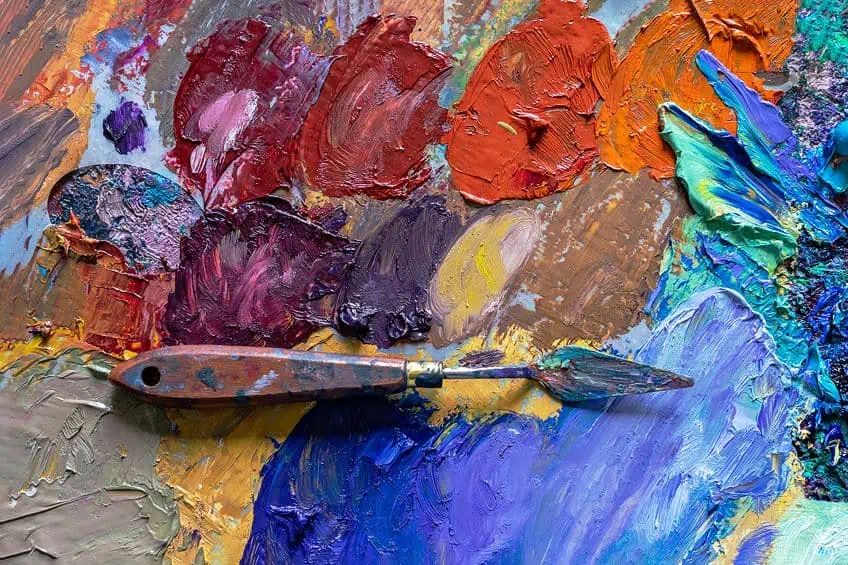
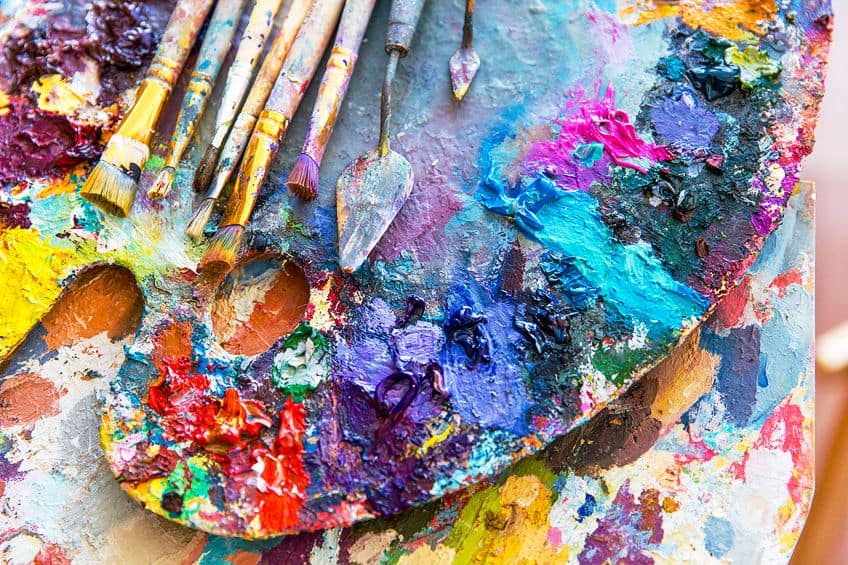
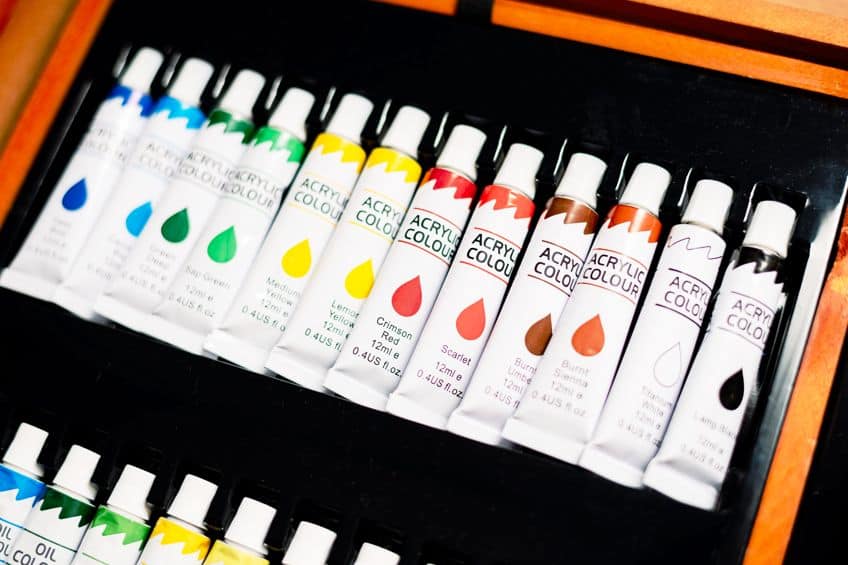
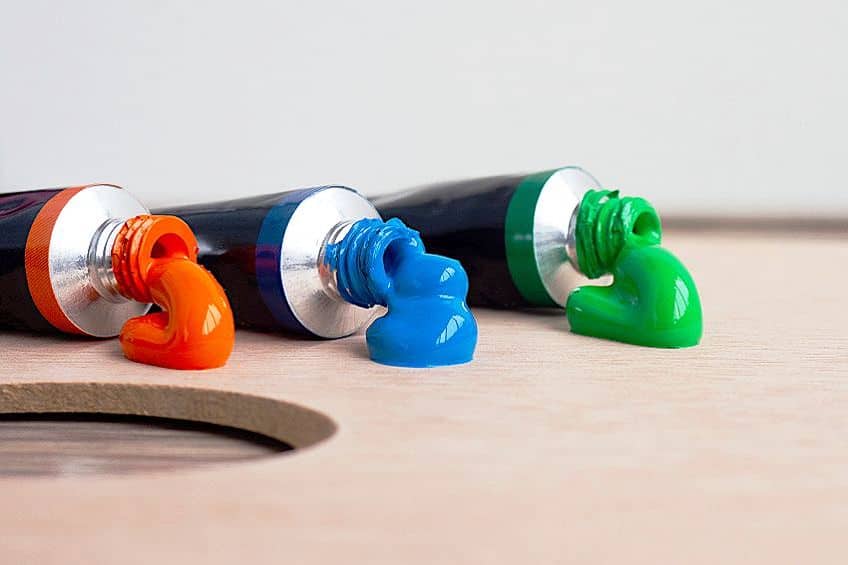
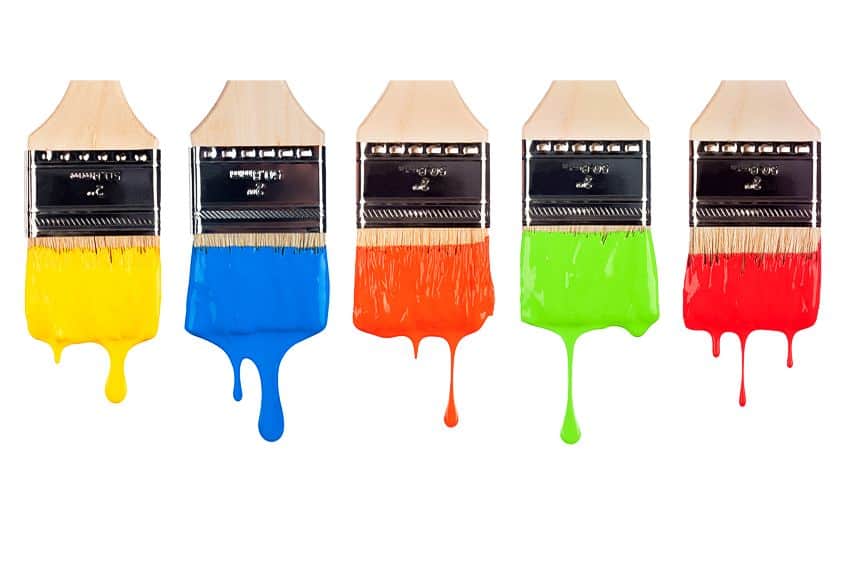
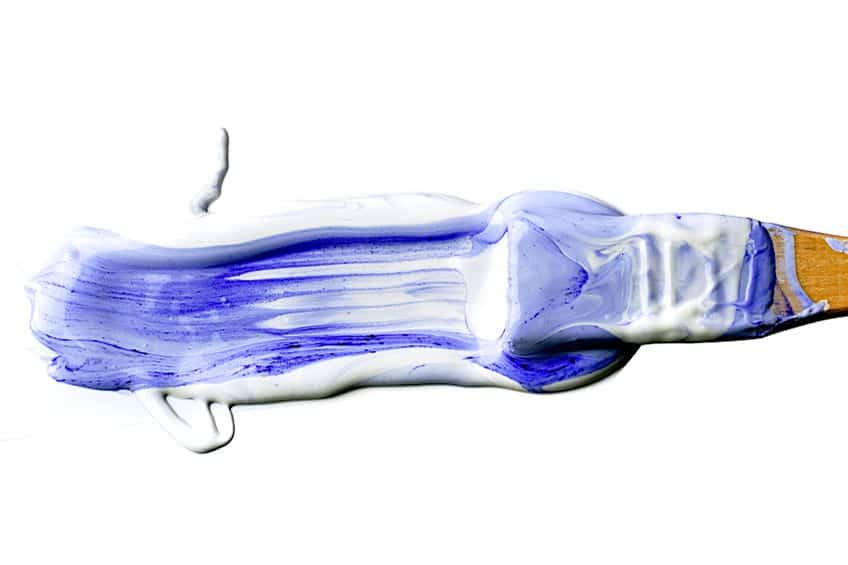
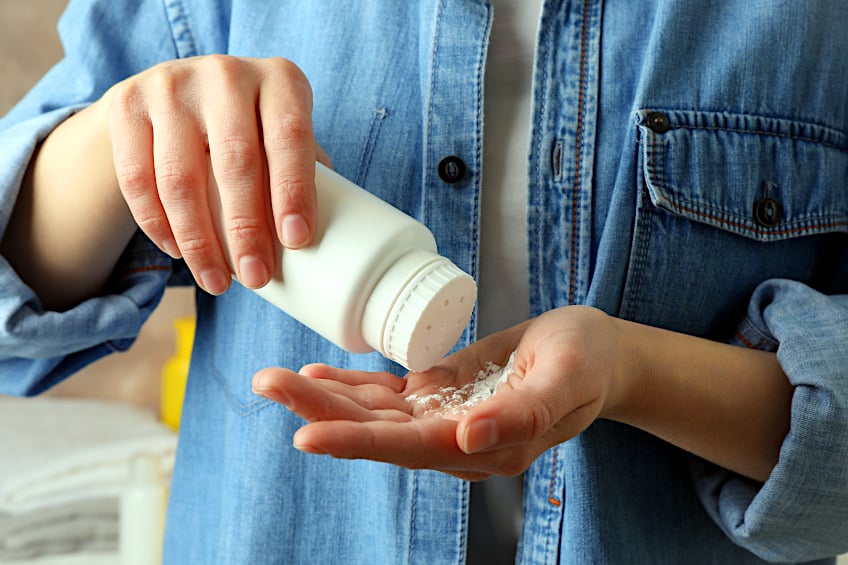
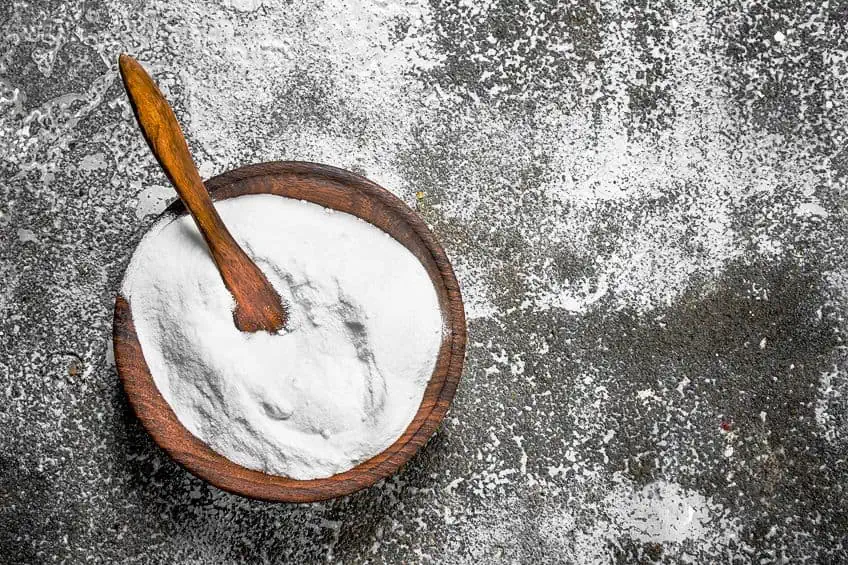
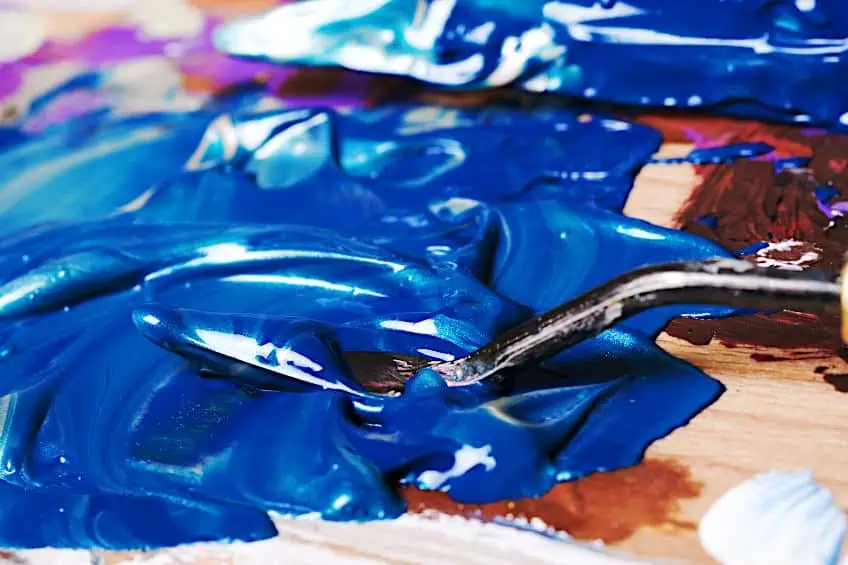
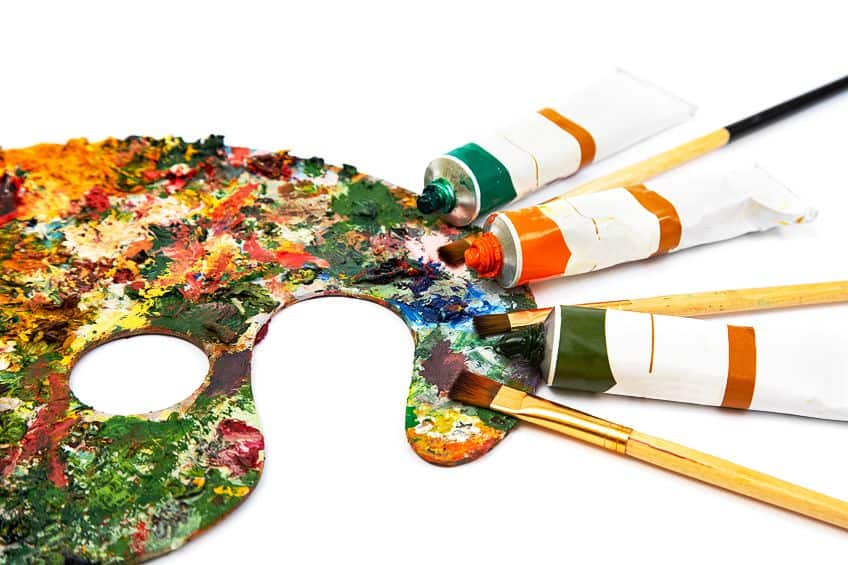
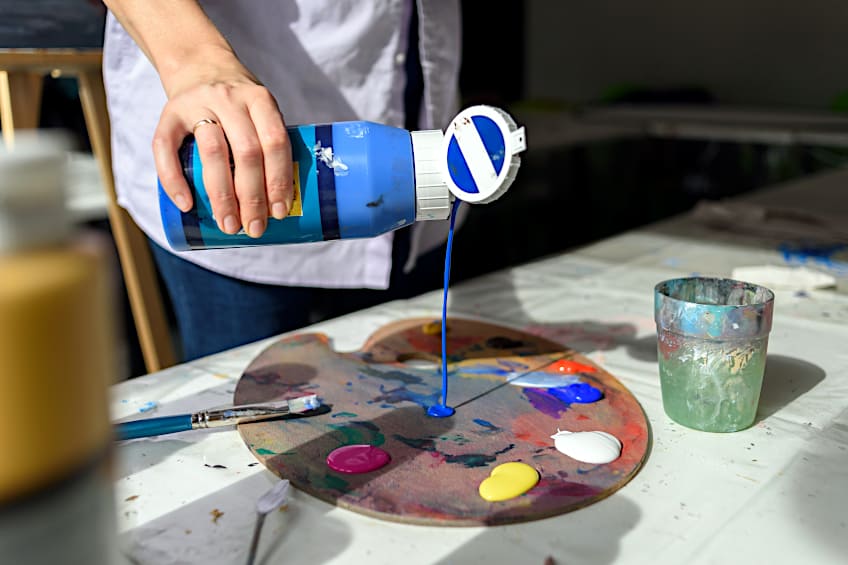
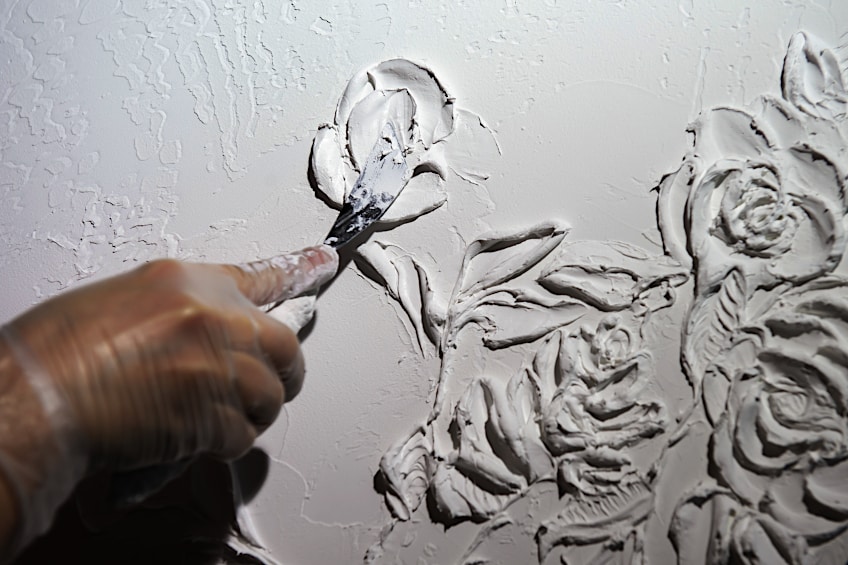
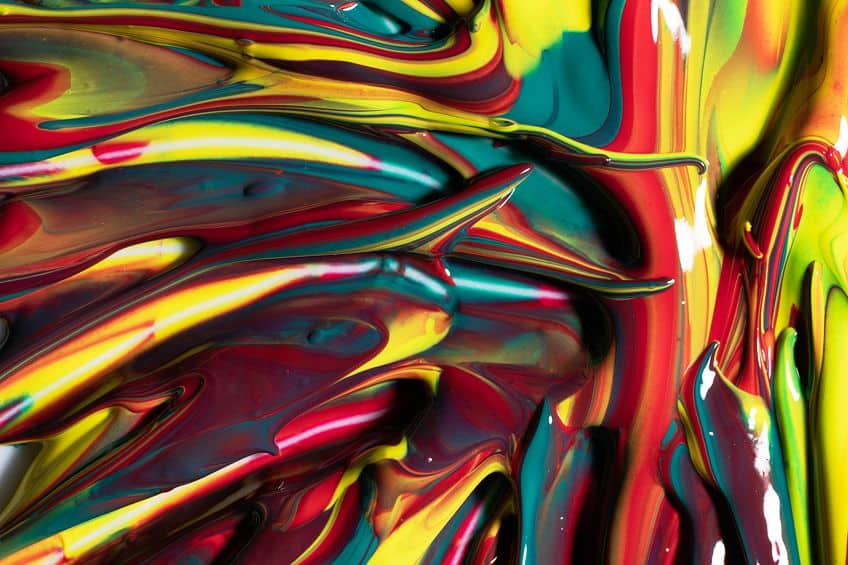
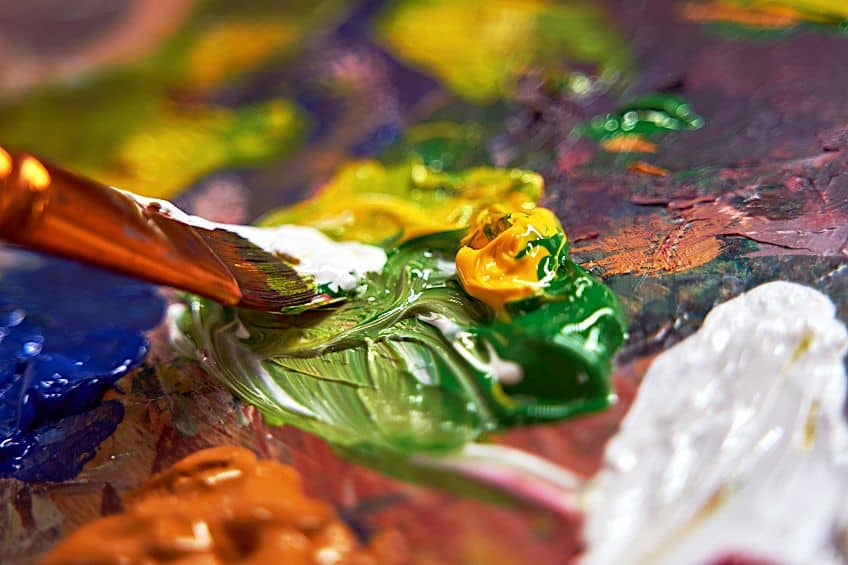

I have used unflavored coffee creamer to tempera paints.
I have used Matte Medium to lengthen, not thicken acrylic paints. It makes them more fluid and yes there is more transparency.